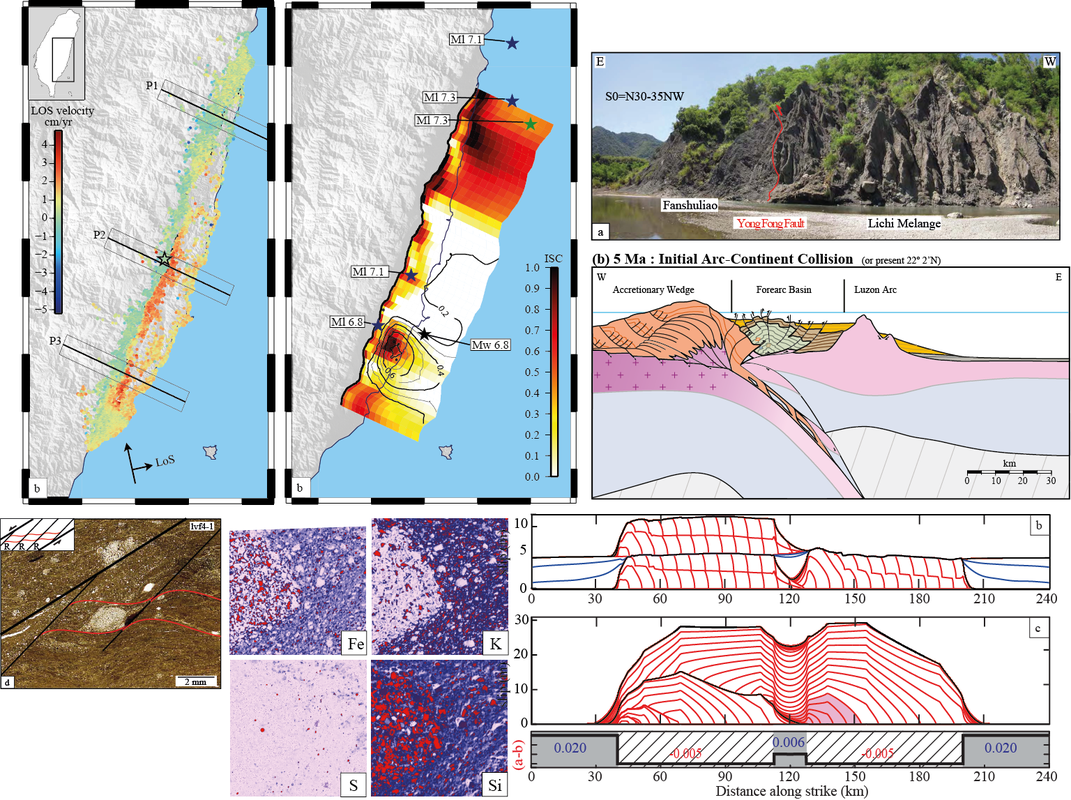|
I use remote sensing techniques to reveal which part of the fault remains locked, accumulating stress to be released in future earthquakes and which part undergoes aseismic creep. I then compare the fault properties infered from kinematic studies with those determined from structural analysis of fault zones. The third part of my work is to relate theses geogical and geodetic observations to mechanical models of the seismic cycle. In particular I investigate the interplay between earthquake rupture dynamics and off-fault damage and how does the temporal evolution of fault and bulk properties impact the seismic behavior of fault. |
|

